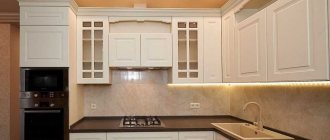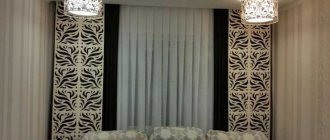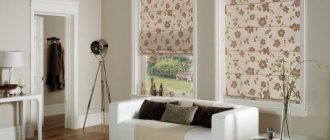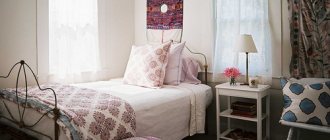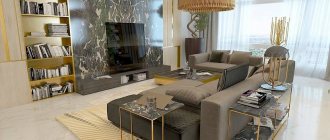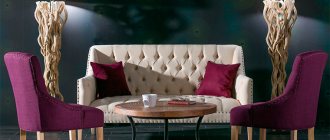Corner bath: in which interior to choose a bathing bowl
With such a wide variety of corner bathtubs, people wonder which bowl option fits best in which space. The answer is very simple - to all interiors. The only problem you might encounter here is adapting to the chosen design and other pieces of equipment. If you place the corner shapes of toilets and washbasins in a similar style, then the bath bowl should be from the same line. If you are thinking about a more round shape, this is the style you should look for in a corner bathtub. Thanks to this, you can create a holistic and attractive interior. A corner bath is the solution for most rooms. The variety of shapes and possibilities gives an excellent chance to choose the right product. Corner baths can be symmetrical (the lengths of the sides are the same) or asymmetrical (the lengths of the sides are different from each other).
Bath in various interior styles
The style in which a corner bathtub looks most harmonious is classic. It can act as a luxurious bath or, conversely, unobtrusively fit into the interior. The bowl in the traditional style is decorated with marble or mosaic tiles, fit into the podium and even decorated with columns.
Scandinavian style is ideal for both apartments and country houses, since the base color used in such an interior is universal white. A corner bathtub fits perfectly into a bright space, saving space and adding attractiveness to the environment.
The Mediterranean style is also suitable for a country house, which, with the help of bright colors and natural materials, conveys the atmosphere of a southern resort and puts you in an optimistic mood. A corner bathroom in such an interior will help you relax and unwind.
The photo shows a bathtub in a classic interior, trimmed with rectangular marble tiles.
Art Nouveau style combines minimalism and decorativeness at the same time, and also welcomes smooth lines in furniture and calm tones. A corner bathroom will highlight the features of the interior in the Art Nouveau style and dilute the strict atmosphere.
A modern-style bathroom is not only aesthetically pleasing, but also functional. What could be more practical than a corner bath? In addition, the variety of shapes and colors of products gives scope for fresh and extraordinary design ideas.
What to look for when choosing a corner bath for your bathroom?
When choosing, you should pay attention to several aspects, such as the length of the sides and additional accessories such as headrests, covers and the element required for assembly, that is, the bathtub siphon. In addition, it is advisable to purchase suitable fittings for the bathroom. Customers who have corner bath bowls often decide to purchase a 3 or 4 outlet faucet.
Corner bath with additional equipment
Some corner baths come with additional features that enhance their functionality or aesthetics. This refers mainly to grooved seats and armrests, which make sitting and bathing in the bath more comfortable. This also applies to all types of handles you may use when entering or exiting the bathtub. For some bathtubs, you can also purchase additional headboards or other accessories to make your bathing experience even more enjoyable.
How to choose
An asymmetrical font is most often chosen in two opposite cases:
- when the room allows you to install something larger than a regular rectangular bathtub;
- when the bathroom is very small and space saving is required.
In both cases, you need to know what to look for so as not to make a mistake when choosing a model.
What to pay attention to
- Wall thickness is one of the main parameters indicating the quality of the product. Thickness 5 – 6 mm is an indicator of models in the middle price segment. If the wall thickness is less, the service life of the bath can be significantly reduced.
- Appearance of the coating .
A high-quality coating is characterized by the absence of external damage, a smooth surface, uniformly white color and shine. The acrylic coating should not be transparent, otherwise it is a fake. - The walls of the bathtub must be rigid and should not bend when pressed (applies to bathtubs made of steel). A font made of acrylic should consist of two layers: polyurethane and acrylic. This is easy enough to check; you just need to look under the side and inspect its edge. If there is still an additional layer of plastic, the plastic bathtub will not last long.
- Orientation. When choosing, do not forget to pay attention to how the asymmetrical bathtub is oriented and relate it to the room where it will be installed. The choice of product is made based on the location of the bathtub installation, and is determined by the position of the small side adjacent to the wall relative to the front side of the bathtub. By type of installation they are divided into: Right-handed,
- Left-handed.
What to ignore
- The depth and shape of the bowl do not affect its quality; this indicator depends on consumer preferences.
- You can choose the color to your liking; multi-colored models are not inferior in strength to classic white ones. It's all about the dyes added to the material.
Asymmetrical corner bath
A modern bathroom is not only a guarantee of comfort, but also impeccable aesthetics. If you want to enjoy long, relaxing water treatments at home and at the same time a designer interior, you can bet on modern corner baths. The original design of these models is combined with their high functionality.
Corner baths come in different sizes and shapes. One of the key questions to answer at the beginning of the selection is the question of symmetry. Corner baths can be symmetrical or asymmetrical. The first ones are suitable exclusively for large bathrooms, in which you can afford to occupy a spacious area with a bowl. In other interiors, this solution will be inconvenient, significantly reducing the space of the room, worsening its functionality.
In small interiors, asymmetrical bathtubs look better. The degree of their asymmetry is very different, but thanks to this, everyone will find a dimension that will best fit into the interior of a particular room. In a sense, this is a compromise solution, thanks to which you can enjoy a corner bath without losing the useful space of the hygiene room.
Choice depending on the type of room
A small rectangular room combined with a toilet is a classic of recent constructions of our multi-storey buildings. In order for such a bathroom to be not only functional, but also comfortable, you need to think through everything. When choosing a corner bathroom, install a washbasin in the same format, and a toilet in the free space between them. There are few options with this layout. For this type of room, choose a diamond-shaped bathtub; it will fit organically into the overall area and will not take up much space.
Diamond shaped corner bathtub.
A square room provides more opportunities to use useful space and implement different design ideas. In such rooms, symmetrical corner fonts are installed. The main thing is to adhere to the basic installation rule - the length of the bathtub should not exceed half the length of one of the walls.
In a large room, you can install bathtubs of different shapes: round, oval and even large heart-shaped for romantic circumstances in your life.
The main law for installing a corner bath is that the length of the bath should not exceed half the length of one of the walls.
Wide choice of corner baths
Which bath is the best? Asymmetrical, semicircular or with hydromassage? Rectangular bathtubs have a big competitor - corner bathtubs. These are solutions available in many forms, allowing you to optimally arrange even limited spaces.
The range includes triangular, hexagonal, pentagonal or curved models, the so-called semicircular bathtubs. There is also a symmetrical bathtub (with two sides the same length) and an asymmetrical basin with one shorter side, which works well in a small room space. This type of built-in bathtub usually has a low bowl (slightly lower than in the case of classic options), providing safe entry and exit, especially for the elderly and children.
The volume of the model depends on the selected size; it can vary from 90 to 300 or more liters. A room with a corner bath means excellent use of available space without compromising the comfort of the bather or the aesthetics of the interior. To enhance the pleasure, lovers of relaxing moments under a blanket of foam can choose corner baths with hydromassage.
Examples for a combined bathroom
A bathroom with a corner bath and toilet is another good way to make the room feel more spacious. At the same time, the arrangement of furniture and plumbing is simplified: due to the absence of a partition, space is freed up for a bathtub, toilet and sink, which is especially important in panel Khrushchev-era buildings.
The photo shows a rounded corner bathtub in a combined bathroom, decorated in black and white.
A combined bathroom with a corner bath is appropriate not only in apartments, but also in private houses, which is due to the peculiarities of the location of communications. In addition to the basic plumbing, you can find a place in the room for a bidet, and zone the toilet with a partition.
Types of corner baths
A corner bath can become a practical element of the room. Its functional characteristics will be determined by the advantages of the material used for production. Here are the main types of corner baths:
- asymmetrical;
- with shower;
- with screen;
- with hydromassage;
- built-in
Manufacturers offer, among other things, acrylic, cast iron, conglomerate, steel and even wooden bathtubs. The most popular of these materials is acrylic, which is pleasant to the touch, resistant to chemical and mechanical influences, demonstrating anti-slip and thermal insulation properties. Acrylic corner baths are the largest group of solutions available. To improve the functionality of a corner bath, lovers of water treatments can equip the bowl with additional functions. A corner whirlpool bathtub will be the ideal solution to enhance your bathing experience. Air bubbles help you relax after a hard day. Practical alternatives would also be an asymmetrical bathtub with a screen, that is, a corner bowl with shower or sanitary ware with a seat, which guarantees additional surface for positioning the body or placing cosmetics.
A corner bathtub with a screen is a functional combination of a bathtub and a shower. A double (2-person) corner whirlpool bath will provide complete relaxation in the privacy of your home. The design with a seat and handles is recommended for the elderly and disabled. A corner bathtub without a seat guarantees a large surface area inside. For tall people, a bathtub with low sides is not recommended.
Characteristics and choice of bath
Despite the fact that corner bathtubs in the interior have become popular only recently, manufacturers offer many options for the design of this element. Corner baths differ in shape, size, and displacement. The choice of a specific model depends on the wishes of the owner, the size of the room, and the installation method.
Corner bath shapes:
- Triangular.
- Diamond-shaped.
- Rectangular with a beveled corner.
At the moment, the range from manufacturers is very large, choosing the right option will not be difficult
When choosing a corner bath, you should take into account the features of the room
Some stores offer consumers corner bathtub models with an asymmetrically elongated side. It is relevant for a spacious, elongated room.
Planning the location of plumbing fixtures must be done in order to subsequently avoid negative consequences due to incorrect placement of elements.
Plan ahead
For a small room, a corner bath is a great option.
A corner bath will help you save some space
The sizes of the corner bathtub are divided into 3 categories.
- Small (140x140 cm). Enough space for one person.
- Medium (160x160 cm). Two people can easily fit.
- Large (170x170 cm). A luxurious option for large spaces.
Corner bathtubs are made from different materials
| Acrylic | A modern and reliable substitute for plastic. Lighter and warmer, unlike metal, pleasant to the touch. A significant disadvantage is the low resistance to mechanical damage and “rough” cleaning agents. |
| Cast iron | It is becoming less and less popular due to its heavy weight, which creates difficulties in transporting and installing the element. A huge plus is durability. Due to the rarity of the metal and the complexity of the production process, the price is several times higher than for similar models made of other materials. |
| Steel | Similar to cast iron, only lighter and less expensive. The disadvantages include the fact that such a bathtub cools down quickly, but with proper installation this problem can be easily eliminated. |
Corner baths in the shape of a triangle with a rounded side can significantly save “useful” space. Trapezoidal models look expensive and voluminous, but at the same time, with proper placement, they allow you to properly use precious meters. If space allows, you can purchase a polygonal corner bathtub. It looks original and unusual.
Bathtubs are made from various materials
A corner bath can significantly save space
Small corner bath: dimensions of the ideal bowl
When designing a bathroom, accurately measure and plan the space. Before purchasing any equipment, determine the location of individual furniture, bathtubs, sinks or washing machines. Once you know what size bathing bowl to choose, you can decide on the material from which it will be made.
A small hygiene room with a bathroom is not always possible. Arrangement of a small area is associated with a number of dilemmas, but the size of the corner bath gives complete freedom in terms of location and use of every centimeter of available space. In the bath segment there are small bowls 120x80 cm or 120x100 cm, as well as large corner baths 140x70, 150x150 cm, 120x120 cm, 130x130 or 190x140 cm, which are a chic place to relax and replace a home spa. Asymmetrical bathtubs with one shorter side will take up less space than symmetrical bowls, so experts recommend installing them in a room that is not limited in size. Thanks to this, it will be possible to place a convenient bowl in it without compromising the visual aspects of the interior. In turn, solutions with two identical sides, reminiscent of a trapezoid or polygon, will require a large angle, which is due to their location in a slightly larger space. The proposals will enhance the modern character of the decor and create geometric motifs.
For a small bathroom in a block, an asymmetrical or narrow bathtub is recommended. Symmetrical bathtubs take up more space and are best used in a spacious room. The sizes of the corner bathtub are different, they cover both small and large models with the following parameters:
- 150×150 cm;
- 120×120 cm;
- 140×70 cm;
- 130×90 cm;
- 150×90 cm;
- 160×100 cm;
- 140×140 cm.
Why are corner baths such a good solution for small spaces?
Small bathroom spaces are a real challenge for people who plan to place a comfortable and spacious bath in such a space. Everyone wants to have their own mini-spa, where they can not only wash themselves after a busy day, but also relax and get rid of stress. Of course, the best solution would be to have a spacious bathroom, preferably with a window, in which you can easily install a large designer bathing bowl, and even then there will be plenty of free space in this room. So, if you have a small area, you need to give up the long-awaited bath? Of course not. Designers from the largest and most famous companies producing high-quality and innovative plumbing fixtures come to the aid of people whose bathrooms are small. Thanks to their efforts, it was possible to create bowls that adapt their shapes to the corners of the room, saving space in an incredibly clever way while offering a high level of comfort. A corner bathtub with a long side of 150 centimeters can have the same size capacity as a regular bowl with a length of 170 centimeters. In the case of apartments in blocks and the prevailing narrowness in them, the additional 20 centimeters turns out to be an extremely important advantage, allowing, for example, a cabinet under the sink or additional furniture.
The best corner bath shapes for small spaces
The most common shapes for small rooms are triangles and tapered rectangles. Most often, one of the long edges is straight and the other is rounded. This saves space and also ensures comfort while lying in this form of bathtub. A very good solution could also be to enrich the decor with an elegant screen curtain, for example, made of tempered glass, which will allow you to take a shower whenever someone needs a quick wash, but does not have time for long baths. This way, you can combine the best features of both bath and shower fixtures while preserving space. A corner bath can take up up to 1/3 of the room's area.
Asymmetrical bathtub (41 photos): an original solution for non-standard interiors
A comfortable bathroom is one of the essential conditions for a comfortable life. However, the limited area of the bathroom may stand in the way of realizing your dream. Solving the problem of shortage of meters is quite difficult.
One of the solutions is to select non-standard plumbing fixtures, an example of which is asymmetrical bathtubs.
What types of baths are there?
Modern bathtubs differ not only in price, but also in size, shape and material of manufacture. In addition, there are baths equipped with additional functions, such as hydromassage.
Bathtubs are made of cast iron, polymer materials, steel, natural stone, wood, and glass. Of course, a bathtub made of solid wood or natural marble is rarely installed in typical apartments.
As a rule, these are options for your own homes, and such models are quite expensive. Therefore, people are mainly interested in the usual options.
Cast iron baths
Cast iron bathtub asymmetric
Cast iron is a traditional material for making bathtubs.
The advantages of such plumbing are known:
- These are durable models that can last for more than a decade.
- Cast iron has good heat capacity, so you can enjoy water procedures in such a bath for a long time; the water in it cools more slowly.
- No noise is created when drawing water.
But such models also have disadvantages; the main negative point is the heavy weight of the bathtub. This circumstance complicates the delivery of products and their installation.
In most cases, cast iron bathtubs are produced in a traditional oval shape and standard sizes. But modern manufacturers are ready to offer original solutions. For example, you can purchase an asymmetrical cast iron bathtub with hydromassage.
Asymmetrical bathtub with hydromassage
As a rule, these are corner models. Such plumbing is a great opportunity to use the space of the bathroom more efficiently, because the bathtub will only take up a corner.
It should be noted that an asymmetrical cast iron bathtub is an excellent choice for spacious bathrooms. Such models allow you to create original design projects and build non-standard interiors.
For ease of installation, asymmetrical bathtubs are available in two versions - left- and right-handed. This circumstance makes it easier to plan the bathroom interior.
The main qualitative characteristic of a cast iron bathtub is the composition of its enamel. Only if the enameling is carried out using modern technologies and high-quality materials will the bathtub last a long time.
Advice!
When choosing a cast iron bathtub, you need to carefully examine its surface.
The enamel should not have chips, scratches, or smudges. There should be no areas that differ in color from the rest of the surface.
Example of installation of a bathtub in a small bathroom
An enamel bathtub should be handled with care, as it is quite difficult to restore damaged enamel.
The weight of a cast iron bathtub is determined by its manufacturer. Thus, modern models, as a rule, are lighter than before, as manufacturers are trying to reduce the thickness of the bathtub walls. This circumstance does not affect the strength of the model, but the installation process becomes easier.
Advice! When purchasing a cast iron bathtub, you should check whether the set includes adjustable support legs. Their presence will greatly facilitate installation.
Steel baths
Asymmetrical steel bathtub
This type of bathtub is often chosen due to its light weight and affordable price. In addition, steel is a more ductile material than cast iron, so an asymmetrical steel bathtub can have more shapes and sizes.
High-quality steel bathtubs have an enamel coating, which lasts a long time and gives the sanitary ware an attractive appearance, maintaining a beautiful shine and whiteness.
The light weight of bathtubs made of steel makes installation easier. But, at the same time, it forces you to resort to special techniques. So that the bathtub does not rock during operation, it is recommended:
- In addition to using the legs that come with the bathtub, install additional supports under the bottom.
- These supports are made of brick or foam concrete.
- The gaps between the supports and the bottom of the bathtub are filled with foam.
Advice!
To prevent the drying foam from lifting the light steel bathtub, it is applied only after water has been filled into the bathtub.
Filling the junction of the bathtub side with the wall with sealant
- The junction of the sides of the bathroom with the wall is filled with transparent silicone sealant.
Manufacturers are constantly improving bathtub models, expanding their range and using polymer additives. Therefore, a modern asymmetrical steel bathtub is practically devoid of the disadvantages that are inherent in previous steel bathtubs.
The use of polymer additives increases the heat capacity of the material, so now the water in the bath cools much more slowly. In addition, the noise level during water collection is significantly reduced, and as the bathtub is filled, the unpleasant sound disappears completely.
Since steel is a fairly plastic material, the shapes of steel baths can be different. However, when purchasing, you must definitely pay attention to such an indicator as wall thickness.
So, a good asymmetrical steel bathtub will have walls whose thickness is no less than 3.5 mm. This model will cost more than a standard steel bathtub, but it will also last much longer, so the additional costs will be worth it.
Acrylic bathtubs
Acrylic bathtub asymmetric
Acrylic bathtubs are a relatively new type of plumbing fixture. But they quickly began to be in high demand due to their performance qualities.
Among the advantages of such baths:
- Lightweight acrylic bathtub. This is perhaps the easiest type of bath.
- Variety of shapes. A wide variety of models are made from acrylic - round, square, polygonal; acrylic asymmetrical bathtubs are also available in a wide range.
- Abrasion resistance.
- Variety and color stability. The coloring pigment is introduced into the polymer mass during its manufacturing process, so the color remains until the last day of use of the bath.
- Possibility of repair and restoration of bathtubs. If handled carelessly, scratches may remain on the acrylic surface, but they can be removed quite easily.
- Possibility of using various accessories. Thus, an asymmetrical acrylic bathtub can be supplemented with a hydromassage system, and lighting can be installed on it. The mixer can easily be placed on the side of the bath in any convenient place.
DIY bath installation
In addition, asymmetry in acrylic bathtubs can appear not only from the outside, but also from the inside. Thus, an asymmetrical acrylic bathtub can be equipped with body recesses, headrests, armrests, shelves and other devices that are designed to make hygiene procedures more enjoyable.
Advice!
You should not choose a bathtub that amazes with an abundance of winding lines and complex terrain.
The fact is that it is quite difficult to give high-quality acrylic an elaborate shape, so there is a high probability that such a bathtub either has too thin walls or is made of low-quality polymer.
Modern manufacturers offer a wide variety of models. Regardless of the design style and its color scheme, an asymmetrical acrylic bathtub can be selected that will fit perfectly into the interior.
Such models are an excellent solution for small bathrooms, since an asymmetrical acrylic bathtub will take up less space than a standard-shaped model. And if the bathroom area is large, then you can choose a spacious bathtub of complex shape, which will become the basis around which the interior will be created.
Bathtub sizes and shapes
Acrylic corner bathtub
When choosing a bathtub, you must pay attention to the size of the model and its shape. These parameters are very important, regardless of whether you buy a traditional cast iron model or choose asymmetrical acrylic bathtubs.
The determining factor when choosing the shape and dimensions of the bathtub is the area allocated for its installation. Indeed, in modern bathrooms, in addition to the bathtub itself, as a rule, additional equipment is installed - a washbasin, washing machine, shower cabin, furniture, etc.
Small acrylic bathtub
If there is practically no space for a bathtub, then you should choose a compact model. For example, an asymmetrical bathtub 90 90 may be suitable. Of course, in such a “baby” you cannot lie comfortably in the foam, however, the presence of even a small bath will allow you to diversify hygiene procedures.
Models with a length of 135 cm are designed for small areas. Bathtubs of such non-standard sizes are available from many manufacturers. Despite their miniature size, such bathtubs are quite comfortable. With their help, you can make even the smallest bathroom comfortable.
Acrylic bathtub of complex shape
For a medium-sized room, an asymmetrical bathtub 150 is suitable. The width of the models may vary, depending on the model. The capacity of the bath is determined by its depth, as well as the thickness of the walls. As a rule, 150 cm long baths contain from 140 to 200 liters of water.
Spacious bathrooms can be equipped with bathtubs of 180 cm or more in length. In this case, it is possible to install double models with a capacity of more than 1000 liters.
As for the shape of the bathtub, it is determined both by the area of the bathroom and by the desire of the owners. So, in spacious rooms you can take round or, for example, hexagonal-shaped baths, since such models require a lot of space. But the corner and Example of an installed corner acrylic bathtub are perfect for hygienic rooms of any size.
Tips for installing bathtubs
Example of an installed corner acrylic bathtub
It should be noted that installing a bathtub is not an easy job. If you lack experience and construction skills, you should not tackle it yourself, especially if these are cast iron models or an example of an installed rectangular acrylic bathtub.
If there was a defect during installation, you will have to resort to reinstalling the bathtub or even renovating the room. Therefore, savings may lead to additional costs.
When installing a bathtub, you need to remember that each model has distinctive characteristics and installation features. Therefore, before starting work, you should carefully study the installation instructions given by the manufacturer in the product data sheet.
The general installation procedure for any bathtub model is as follows:
- Turning off the water supply.
- Removing the old bathtub.
- Installation of all water drainage elements - drain grates, overflow.
- Fastening the supporting frame.
- Installing a new bath.
- Leveling the bathtub using the leveling feet.
Advice!
When leveling the bathtub, use a level.
As a rule, the sides are aligned evenly to the horizon; there is no need to make a slope towards the drain, since it was originally included in the design of the bathtub.
Example of an installed rectangular acrylic bathtub
- Connecting the bathtub drain to the sewer riser. It is important that the slope of the pipes leading to the riser is no less than two centimeters per linear meter of pipe.
- Checking the system for leaks. To carry out the test, water is drawn into the bath and then drained, observing the condition of the connections. When leaks are detected, measures are taken to eliminate them.
- Fixing the bathtub legs to the floor.
Here are the general steps of the work. When installing a specific model, it may be necessary to carry out additional operations. So, for example, if acrylic asymmetrical corner bathtubs are installed, then it is often necessary to pre-align the walls in the corner of the installation, since the angle of their intersection is not perfectly straight.
Conclusions:
Asymmetrical bathtub models are a great opportunity to create an original interior, as well as equip a small bathroom in accordance with modern ideas about comfort.
Gallery
Comfort with corner bath: hydromassage
To ensure that all people using the bathroom in the room have a very high level of comfort while taking water procedures, you can choose a model for corner installation, which will be additionally equipped with hydromassage. Due to the high competition in the plumbing market, prices for hot tubs today are much lower than several years ago, so almost everyone can afford such a purchase.
To prevent your bathroom from being overloaded with a corner bathing bowl that will take up most of the space, you should choose it in white. It is known that white color optically expands the interior, so such tiles and facades of bathroom furniture are sure to give a sensational effect. You can further enhance the interior by placing a very large mirror on the wall above the bathroom, which is a well-known method, by installing lighting with multiple sources. So, instead of just one light on the ceiling, you can enhance the effect of the space by installing several additional smaller LED lights. Homeowners can choose the type of bathroom lighting that suits them best.
Material selection
In order for the bathtub you choose to meet all your requirements, you need to choose the right material. Glass ones are definitely not needed. Let's talk about normal materials.
Cast iron
A cast iron bath is:
- for a long time, without manufacturing defects, service life is more than 30 years;
- easy to clean - wiping the enamel that covers cast iron bathtubs will take 2 minutes for any housewife;
- it doesn’t matter about the temperature of the water - a cast-iron bathtub can be filled with even boiling water, it will withstand it just fine.
Acrylic (or quaril)
Let’s clarify right away: quaril is acrylic with the addition of quartz elements - the goal was to make acrylic stronger. The characteristics of acrylic and quarry are almost the same. Advantages of acrylic:
- acrylic bathtubs weigh little - but what does it matter if you don’t carry the bathtub from the store yourself;
- the design of acrylic bathtubs is extremely diverse - but it is difficult to guess whether the miracle of design will fit into an ordinary bathroom;
- The thermal insulation of acrylic is higher than that of metal and cast iron.
It is very easy to scratch or otherwise damage the surface of acrylic - but you will have to sand it. No, you won't do this on your own.
Steel
Inexpensive, lightweight, easy to install, lasts much longer than acrylic, but less than cast iron.
What are the materials for making a bathtub?
Both the size, shape and type of bathtub must be adapted to the surface and parameters of the room, as well as to the individual preferences of the household. The use of the bathtub and the entire room should be comfortable and safe. A hygiene room is an investment for many years, so its purchase needs to be thought through very carefully. Currently, the choice is huge, one might say unlimited. It’s not for nothing that you still can’t decide on a specific model. Bathtubs available in the market differ mainly in the material from which they are made, shape (design), dimensions and method of assembly. First, let's look at the materials from which bathtubs are made. The most common in houses and apartments are:
Acrylic bathtubs - acrylic is a pleasant-to-touch material, always warm (which you will especially like in winter and early morning), and has good thermal insulation properties, thanks to which it retains hot water in the bowl longer. The result is a longer bath without the need to constantly add hot water, which ultimately results in significant savings and helps protect the environment. The acrylic surface will withstand a lot of children's play because it is scratch resistant. An additional advantage of acrylic is the ability to obtain interesting shapes, so today you can find bathtubs in such a material in completely unpredictable patterns. Acrylic bathtubs are relatively inexpensive, and after years of daily use, they can be completely refurbished for a small fee.
Conglomerate baths - conglomerate is an extremely durable material, resistant to scratches and various mechanical damage, and is very easy to clean. This makes it ideal for the production of bathing bowls. Conglomerate bathtubs are distinguished not only by functionality, but also by high aesthetics. They can be safely used in family bathrooms used by small children and older people.
Sanitary Composite Bathtubs - Composite is a mineral aggregate (such as a combination of quartzite and resin) that is highly resistant to scratches and discoloration. This allows manufacturers of bathroom solutions to create an unlimited number of models. Bathtubs made from composites have a designer, fresh shape, and thanks to the addition of acrylic resin, their surface is pleasantly warm to the touch and perfectly smooth.
Steel bathtubs - steel is characterized by maximum resistance to impacts and scratches. Steel bathtubs are made from thin sheet metal, making them lightweight. Their disadvantages are rapid heat loss and price. They can cost 2 times more than acrylic samples.
Each of the presented materials has its own characteristics: acrylic is warm and light, cast iron bathtubs are certainly durable, but also very heavy. Also important is the shape of the bathtub and the width of its rim, on which you usually place cosmetics used while bathing. When choosing a bowl, you should not rush, but you need to analyze every detail. Only then will you be sure that the bathtub is ideal for your hygiene room, fitting into the interior aesthetically and practically. All these elements are just as important for your everyday comfort in using the bathroom.
Materials
The choice of material affects not only the appearance, but also the weight, heat capacity, durability and price of plumbing fixtures. Modern technologies make it possible to use any materials as raw materials: from natural stone, glass and wood to various artificial polymers (rubber, various resins, etc.)
The most popular today are acrylic, followed by steel and, finally, the good old cast iron bathtubs. Next, we will talk about the main pros and cons of each of the most common materials. This will help you make the right choice when purchasing.
Cast iron
This is a classic material for plumbing, very durable and heavy. The bowl is made of cast iron coated with porcelain enamel. This is a good investment and the bathtub will really last a long time.
This container does not slip, is very resistant to scratches, temperature changes (up to 50 degrees), chips and various mechanical loads thanks to the enhanced double glazing. According to GOST 18297-96, it is at least 1.5 mm at the bottom and 1 mm or more at the sides.
By the way!
The walls must be at least 5 mm, on average 6-8 mm. Unscrupulous manufacturers save on metal thickness and coating quality by using conventional powder coating without firing at a temperature of at least 800-950 degrees instead of sintered enamel.
This anti-corrosion technology makes the surface impervious to various aggressive agents (alkali and acid) and hard water. The only significant and serious drawback is its weight (from 100 to 200 kg), which significantly complicates production, transportation and installation.
Due to the characteristics of the material, corner bathtubs made of cast iron are becoming less and less common; more often they are rectangular or oval without the additional functions of a Jacuzzi and chromotherapy. In addition, additional costly structural reinforcement of the floor may be required.
Steel
A corner or rectangular enameled steel bathtub is another of the most common ideas in modern bathroom design in 2020, an intermediate option between cast iron and new innovative materials.
Models made from steel sheets have a number of advantages due to ease of manufacture and installation, relatively inexpensive price, low weight (up to 50 kg), variety of shapes and good dirt-repellent properties.
Attention!
The wall thickness must be at least 3.5 mm so that the bowl does not deform from load and temperature changes, retains its shape longer and does not crack.
They have the most affordable price, but they also have disadvantages. They are less amenable to restoration, make noise from water, can sag under heavy weight, heat up quickly and lose temperature just as quickly, the enamel coating (0.25-1 mm) really does not like abrasive and caustic cleaning agents. A prerequisite when installing a steel bathing vessel is grounding!
Acrylic
The most thermoplastic and non-marking material is polymer polymethyl methacrylate or popularly acrylic. It is most convenient to integrate various complex plumbing systems with pumps, such as heated hydro or air massage, lighting, and a cleaning function. It is in these models that splash screens and sliding doors are most often installed.
Interesting!
Acrylic bathtubs are more expensive than regular iron ones due to their durability. But at the same time, they are much lighter (up to 35 kg), ergonomic and easy to use.
Plastic sheets of 5-6 mm are reinforced with glass fiber by vacuum molding and given any desired shape. In this case, the surface does not need to be additionally protected from dirt and harmful environments, since it has practically no pores and repels microbes.
Also read: Bathroom door size: avoiding mistakes!
Defects can be easily restored by grinding even at home; for larger chips, specialized stores sell repair kits for eliminating large scratches or even through holes. The thermal insulation of acrylic is even superior to cast iron, so the water cools much more slowly.
Acrylic corner bathtub - a modern solution for the interior
People who many years ago wanted to install a bathtub in their apartment could not choose from many options. At that time, there were models made of steel or cast iron, and the offer of shapes was small, limited by the practical dimensions of the bathing bowl, its length and width. Fortunately, today, thanks to the presence of a huge number of companies on the market producing high-quality sanitary ware, people planning a new bathroom have a huge range of different solutions at their disposal.
You cannot deny that bathtubs made using acrylic technology have many advantages. First of all, they are very light compared to their cast iron and steel counterparts. Therefore, it will be very easy to deliver the purchased product to your home, even if the apartment is on the top floor. An acrylic bathtub is also much easier to buy from online stores, which often have a better price. A lightweight bathtub is a much cheaper choice, and you can save more money this way.
The advantage of choosing an acrylic corner bathtub
Another advantage of the material, which is acrylic, is warmth. Entering a cast iron or steel bowl filled with hot water was often associated with significant inconvenience, significantly reducing bathing comfort. Acrylic is warm, which means it will not cause such problems when taking a bath. It heats up quickly, so it will be as pleasant as possible to the body. The last reason why you should choose an acrylic corner bathtub is the cost of purchasing it. This material is clearly cheaper than steel or cast iron. Don't overpay if you can save money without sacrificing quality.
The only disadvantage of acrylic
The only difficulty with an acrylic bathtub is the need to use special products to maintain cleanliness. Since it is made of plastic, chemicals that are too strong can begin to dissolve the top layer, causing defects that can be easily seen. However, this is not a big problem because due to the huge number of acrylic bathtubs sold nowadays, it is very easy to buy special cleaning products that provide excellent hygiene. Thus, a corner bathtub made of a sensational material such as acrylic will be the optimal solution for small rooms. Acrylic is a cheap material and competition in the market is also driving down prices, making these bath bowls affordable for many. You can easily bring and install an acrylic bathtub even into an apartment. This material provides warmth and comfort as it absorbs water temperature very quickly.
Types of asymmetrical bathtubs
Acrylic products come in a wide variety of shapes
The classifications of these baths can be divided according to several indicators:
- As for the material, asymmetrical structures are made from various materials, but products made of cast iron and acrylic are widely sold. Asymmetrical cast iron bathtubs are expensive due to the particularly complex creation technology. Acrylic bathtubs are the best option in terms of price, and therefore it is acrylic asymmetrical bathtub models that are most widespread;
- Asymmetrical acrylic designs amaze with a variety of shapes. This is due to the special flexibility of the material. If we classify designs according to this indicator, we can distinguish triangular bathtubs, rounded at the base, straight, trapezoidal, multifaceted bathtubs;
Note: It is also worth knowing that there is a right and left asymmetrical bathtub, depending on which edge of your bathtub is longer.
- The asymmetrical corner bathroom is multifunctional. This feature is extremely important, since it is it that often plays the main role in the choice. The most popular “fillings” of asymmetrical corner baths are hydromassagers (water flows), air massagers (air flows), chromotherapy (light therapy). In addition, you can note a variety of devices for holding bath accessories - additional sides, recesses for soap. A water purification system is a less popular feature on the market, but still useful. Asymmetrical bathtub models may even have built-in radios and telephones. All these delights and innovations can be controlled very simply - using the control panel;
- Corner asymmetrical bathtubs also differ in size. In construction hypermarkets you can find small bathtubs up to 150 cm in size, and large “pools” whose dimensions exceed 200 cm.
Models have a wide range of functions
But how to choose a specific bath?
- First of all, asymmetrical bathtubs in the interior are selected based on their dimensions. These same dimensions must certainly be equal to the size of the space that you have identified for a brand new bathtub. After all, in your bathroom there will be other noble representatives of the world of plumbing;
Also, when choosing, be sure to pay attention to:
Acrylic corner asymmetrical bathtubs. Advantages, disadvantages and recommendations for selection
- thickness of acrylic sheet;
- design and functions that the model you choose has.
Important! You shouldn't buy a cheap fake with fancy features. Such a miracle will not serve you for long. Money and effort will be wasted.
For more information about acrylic corner asymmetrical bathtubs, follow the link.
Kinds
Bathroom renovation usually involves forgetting about the need to finish or change anything for many years, so it is very important to think through all the details in advance, choose the right materials and plumbing fixtures. Choosing a quality bathtub according to the size of the room comes first. No less attention should be paid to the material from which it is made:
- Metal. They heat up quickly from water, but also give off heat easily and are relatively light in weight, which makes installation possible by one person. The surface is often slippery, this should be taken into account and extreme caution should always be used. Many people note that the bath rattles when filling with water. The quality of the enamel may leave much to be desired. Usually, after a maximum of 10 years, the question of replacement with a new one or restoration arises.
- Cast iron. Heating occurs slower than metal ones, but heat remains longer. Installing it yourself is problematic due to the heavy weight, so you will need help from at least another pair of hands. The solid weight of the structure gives the bathtubs stability and reliability. The service life is longer provided there is good coverage.
- The budget segment of corner baths is made of plastic of various shapes and sizes, which hold heat well. Due to the properties of the material, installation is simple due to its low weight. Experienced experts are of the opinion that plastic corner bathtubs are intended more for country houses, where they will rarely be used. The high temperature and loads to which the material is exposed contribute to rapid deformation, so the service life is no more than 10 years.
- Acrylic baths. The most acceptable option, ergonomic, of various shapes and colors, made taking into account the characteristics of the human body, with headrests and comfortable handrails. Light weight allows for simple installation. Among the disadvantages is the rapid appearance of scratches due to the use of unsuitable cleaning products, coarse powders, and abrasive pastes. If necessary, acrylic can be restored.
Various models of corner baths can harmoniously fit into any bathroom design style. The assortment includes simple solid-cast options, as well as those with provided technological openings for supplying a Jacuzzi system, equipping with aero- and hydromassage.
